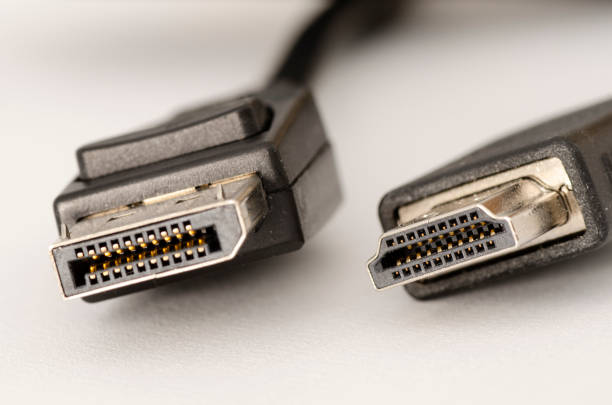HDMI vs. DisplayPort: Which One Should You Use for Your TV or Monitor?

So, you’ve just unboxed your shiny new TV or monitor, and now you’re faced with the age-old dilemma: should you use HDMI or DisplayPort to connect your devices? Both are heavyweights in the realm of display connections, each with their own strengths and quirks. Let’s dive into the nitty-gritty of these two titans and see which one comes out on top for your setup.
HDMI: The Ubiquitous Hero

What is HDMI?
HDMI, or High-Definition Multimedia Interface, is the go-to standard for connecting pretty much anything to a display. From gaming consoles to Blu-ray players and streaming devices, HDMI is everywhere.
Latest Versions
- HDMI 2.0: Supports up to 4K resolution at 60Hz.
- HDMI 2.1: The latest and greatest, handling 4K at 120Hz, 8K at 60Hz, and even 10K at 30Hz. It also supports dynamic HDR and boasts a whopping 48 Gbps bandwidth.
Pros and Cons
Pros:
- Versatility: HDMI is incredibly versatile, supporting both video and audio in a single cable.
- Compatibility: Since HDMI is so widespread, it’s likely to be compatible with all your devices.
- CEC Support: HDMI’s Consumer Electronics Control (CEC) feature allows you to control multiple devices with one remote. Handy!
Cons:
- Cable Length: HDMI cables can suffer signal degradation over long distances (over 25 feet), which might require you to use a signal booster or high-quality cables.
- Price: High-quality HDMI 2.1 cables can be pricey, especially if you’re looking for certified ones.
DisplayPort: The PC Enthusiast’s Choice

What is DisplayPort?
DisplayPort is a digital display interface primarily used to connect a video source to a display device. It’s a favourite among PC enthusiasts and professional users.
Latest Versions
- DisplayPort 1.4: Supports up to 8K resolution at 60Hz, with 4K at 120Hz. It also supports HDR and a bandwidth of 32.04 Gbps.
- DisplayPort 2.0: This powerhouse supports 10K at 60Hz and 4K at a blistering 240Hz, with a mind-blowing 77.4 Gbps bandwidth.
Pros and Cons
Pros:
- High Resolutions and Refresh Rates: DisplayPort excels in supporting higher resolutions and refresh rates, making it perfect for gaming and professional applications.
- Multi-Stream Transport (MST): You can daisy-chain multiple monitors with a single DisplayPort connection. Great for multi-monitor setups!
- Cable Length: DisplayPort handles longer cables better than HDMI without signal degradation.
Cons:
- Limited Audio Support: While DisplayPort does support audio, it’s not as robust as HDMI’s support for various audio formats.
- Compatibility: Not all TVs and consumer electronics support DisplayPort, which can limit its use outside of PC setups.
HDMI vs. DisplayPort: The Verdict
So, which one should you choose? Here’s a quick rundown based on different scenarios:
For TV Viewing: HDMI is your best bet. It’s universally compatible with all your entertainment devices and offers excellent audio and video quality.
For Gaming: If you’re a console gamer, HDMI is the way to go, especially with the latest consoles supporting HDMI 2.1 for high refresh rates and resolutions. PC gamers, however, might lean towards DisplayPort for its superior refresh rates and support for multi-monitor setups.
For Professional Use: DisplayPort takes the crown here. Its ability to handle high resolutions and refresh rates makes it ideal for graphic design, video editing, and other professional applications.
In the end, both HDMI and DisplayPort have their unique strengths. Your choice will largely depend on your specific needs and the devices you’re connecting. So, whether you’re binge-watching your favourite series, battling it out in the latest game, or working on a creative project, rest assured that both of these connections have got you covered. Happy viewing!
This website uses cookies for functionality and performance purposes. Learn more